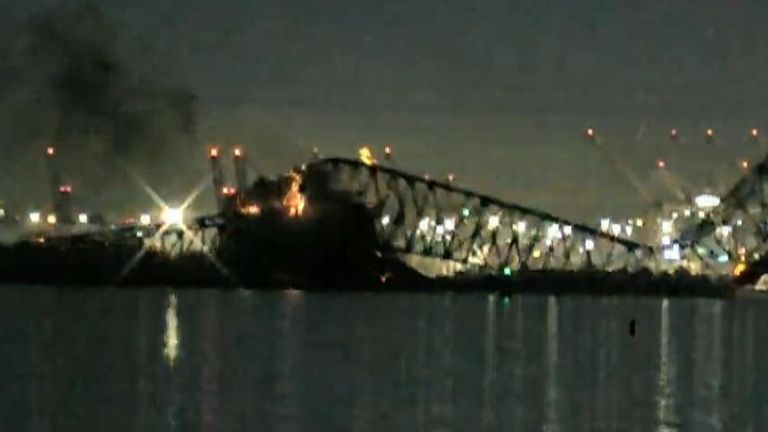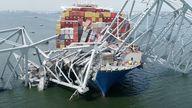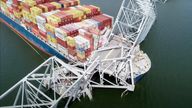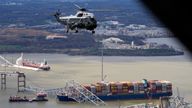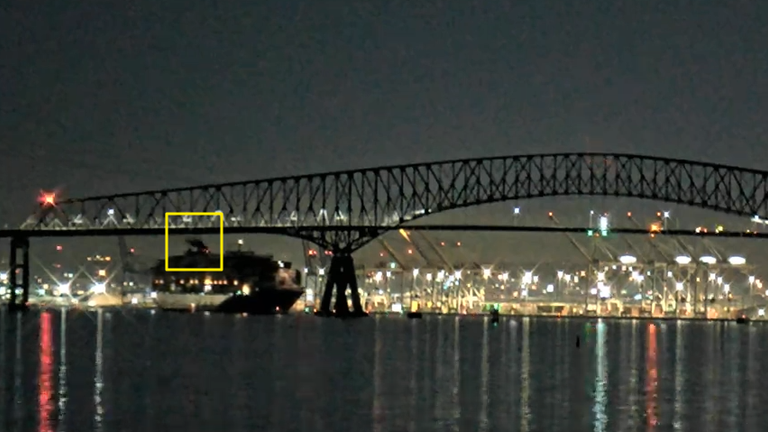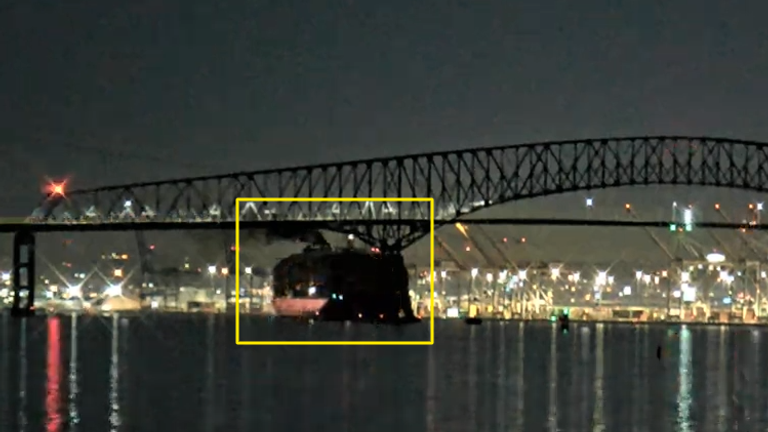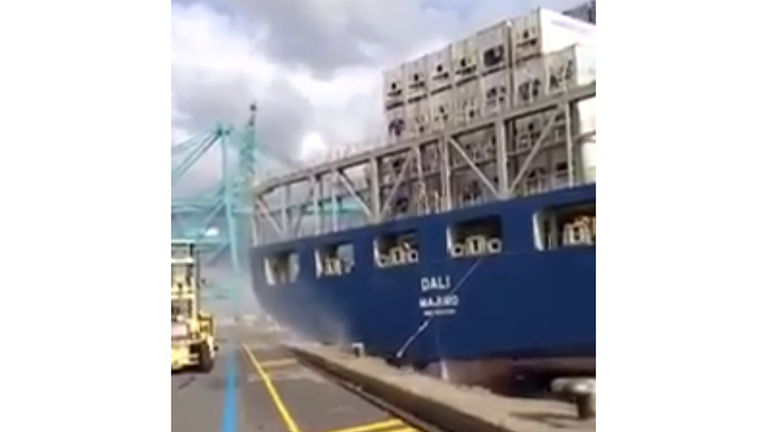Baltimore bridge collapse: Ship loses power then starts smoking - what CCTV and marine tracking tells us about what happened
Sky News's Data & Forensics unit looks at what happened in the minutes before the container ship hit the Francis Scott Key Bridge in Baltimore
Tuesday 26 March 2024 13:52, UK
CCTV video and marine tracking data shows the Dali container ship lose power, adjust its course and start smoking before hitting the Baltimore bridge.
The Singapore-flagged container ship left the Port of Baltimore at around 12.45am local time. Its destination was Colombo in Sri Lanka.
In just over four minutes, the vessel changes course, loses power, starts smoking and hits the Baltimore bridge.
As the Dali approaches the Francis Scott Key Bridge at 1.24:32am local time it appears to lose power for around 60 seconds.
Around the same time, ship tracking data on MarineTraffic shows the Dali alter course as it approaches the bridge.
Its highest registered speed between the port and the bridge is 8.7 knots, it starts to slow down around 1km from the bridge. Its last registered speed is 7.6 knots between 100m and 200m from the bridge.
Just over a minute after appearing to lose power the ship starts producing black smoke.
The lights go out for a second time just over two minutes before it hits the bridge.
According to the timings on the CCTV, the ship hits the bridge at 1.28:44am. Four seconds later the bridge collapses.
The evidence appears to tally with a report from ABC News in the US which has cited unclassified intelligence that the container ship lost propulsion as it was leaving port and crew notified officials they had lost control.
'There should be no room for one-person errors'
A maritime safety expert says the "most likely" cause of the crash was a failure in the ship's machinery.
David McFarlane, director of Maritime Risk and Safety Consultants Ltd, has told Sky News: "The first thing that springs to my mind is: was there a sudden fault with the ship's engines or the steering gear? The other, of course, is: was there a navigational error?"
Be the first to get Breaking News
Install the Sky News app for free


Mr McFarlane says a human error was less likely because of the number of people who would have been on duty.
He adds: "There should be no room for one-person errors because one of the other people should jump in and say 'hang on...'
"The most likely cause of this is a failure in machinery or steering gear, but we just won't know until the authorities have been on board. And even then, they're unlikely to say what's been going on for some considerable time."
More than 10 boats help rescue
According to MarineTraffic data, the first ship to arrive around 10 minutes later is a tug Eric Mcallister. It helped the 300-metre container ship leave the port.
It is joined by a second tug Bridget Mcallister and a search and rescue vessel around 25 minutes after the bridge is hit.
More than 10 boats are now involved in the rescue.
Flight tracking data from Flightradar24 shows a police helicopter arriving at 2.04am local time. A coastguard helicopter comes from Atlantic City and arrives at 4.42am.
Vessel involved in separate incident in 2016
The Singapore-flagged ship was previously involved in a minor incident when it hit a quay at the Port of Antwerp in Belgium in 2016, according to maritime accident site Shipwrecklog.
The vessel was reportedly damaged in the incident, but there were no injuries or pollution issues reported.
The Data and Forensics team is a multi-skilled unit dedicated to providing transparent journalism from Sky News. We gather, analyse and visualise data to tell data-driven stories. We combine traditional reporting skills with advanced analysis of satellite images, social media and other open source information. Through multimedia storytelling we aim to better explain the world while also showing how our journalism is done.
